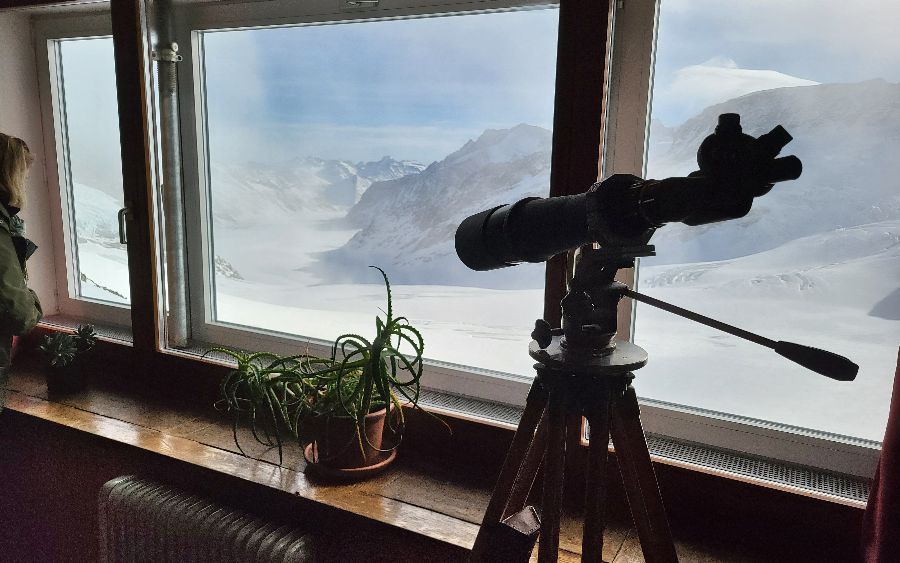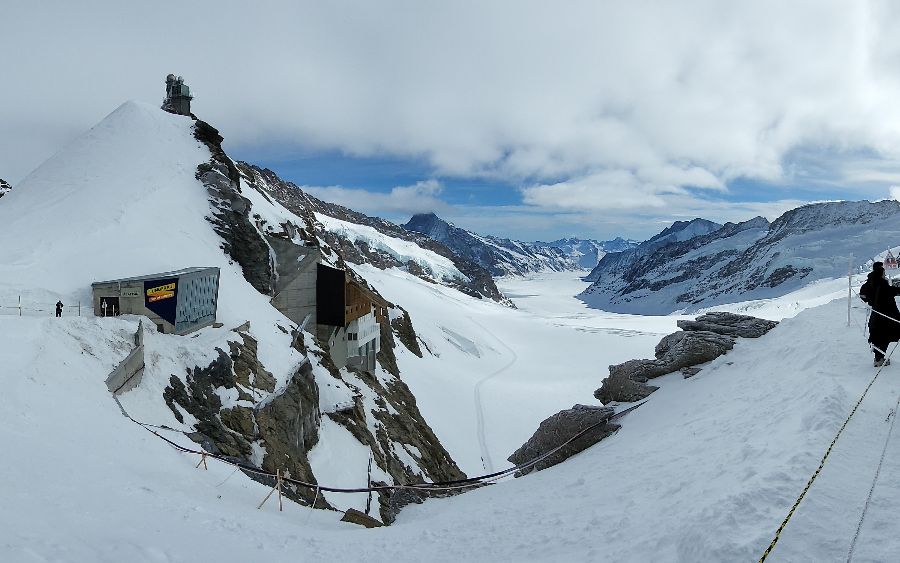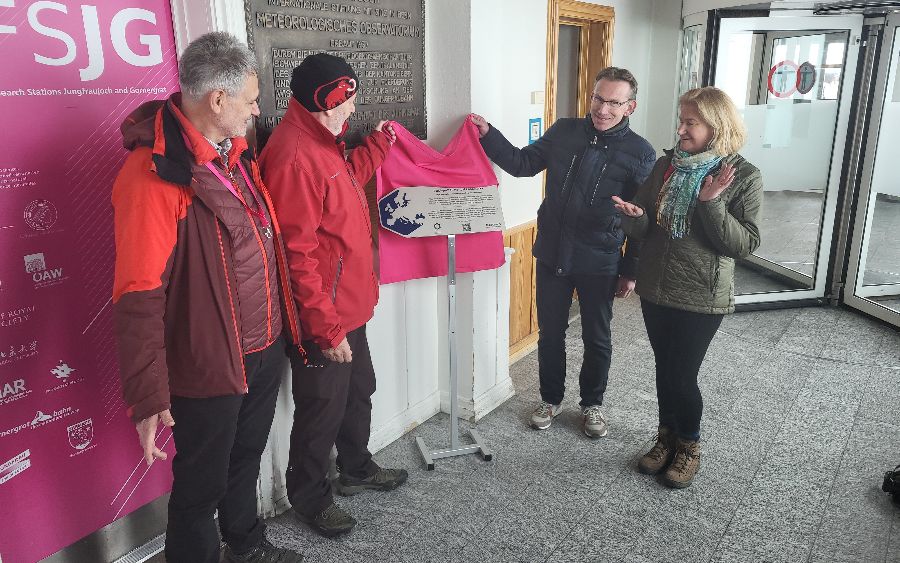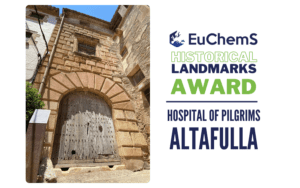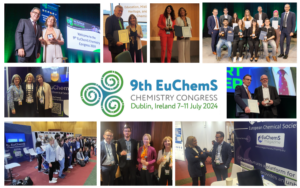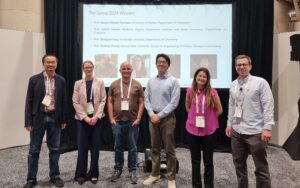The group was 3571 metres above sea level, in the middle of a cloud embracing the summits of Jungfraujoch, where a special, High Altitude Research Station is located. Yet, the low visibility and freezing cold could not demoralise the visiting company – after all they were there for a truly celebratory occasion: the unveiling of the 2021 EuChemS Historical Landmark Award Plaque. And perhaps to adjust to the high spirits of our group, not soon after the ceremony, the clouds disappeared, and Jungfraujoch showed its true beauty – but let’s not get ahead of ourselves.
A day in Bern
Before the day of the excursion and plaque ceremony, EuChemS representatives, as well as high-profile guests from various research institutions, academia, policy organisations and the media gathered at the Department of Chemistry of the University of Bern. The occasion was no less festive than the trip on the following day: the Swiss Chemical Society organised a symposium, where attendees could learn about why Jungfraujoch was more than deserving of becoming a designated landmark. The invited speakers introduced the wide range of research areas related to Jungfraujoch, or to high altitude processes. These fascinating lectures are beyond the scope of this brief account, however, their abstracts can be read in the booklet of the event.
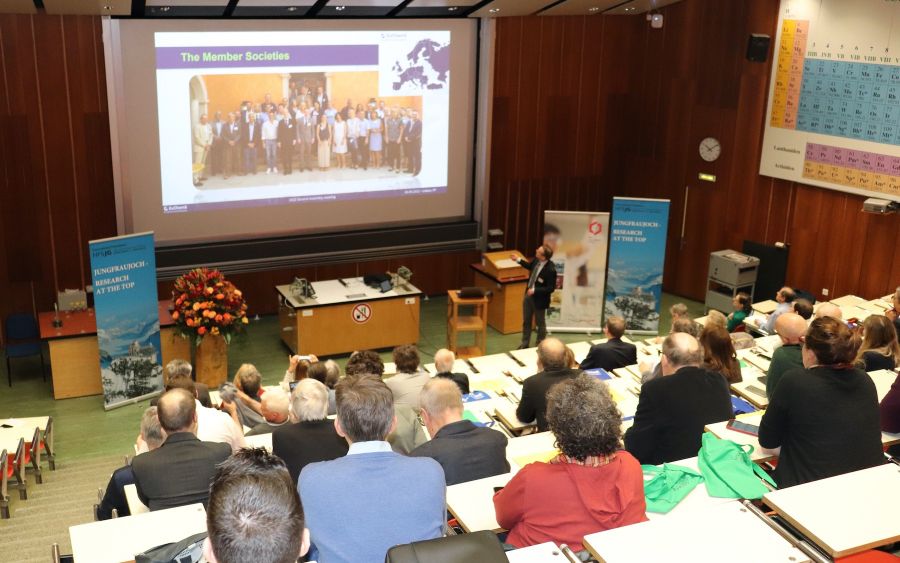
In addition to scientific topics, the outstanding historical and international significance of the station was highlighted by those who are the closest to it. These sessions were not only extremely informative, but also demonstrated the passion and drive of those working at the peak of Jungfrau. President of International Foundation of the High Altitude Research Stations Jungfraujoch and Gornergrat Foundation (HFSJG), Prof. Silvio Decurtins proudly discussed the scientific milestones related to Jungfraujoch in its welcome address, and towards the end of the symposium, a letter by Dr. Ginnette Roland was read – who spent 60 years working at Jungfraujoch. Her experiences of being part of this research endeavour for more than half a decade as well as the anecdotes she shared received huge applause from the audience. After the event, thoughts were exchanged during the aperitif and the gala dinner – but towards the end of the evening, those participants who were taking part in the on-site excursion – including EuChemS President Floris Rutjes, Chair of the Landmark Selection Committee Brigitte van Tiggelen, EuChemS Secretary General Nineta Hrastelj and Communications and Policy officer Marton Kottmayer – retreated to get some rest before the following day’s journey.
Revealing the EuChemS Historical Landmarks Award Plaque
And what a journey it was! Over the course of two train rides, and one gondola lift, the delegation witnessed how the green hills surrounding Bern, the location of the Symposium, transformed into snowy mountaintops. Finally, from Grindelwald station, the company transferred onto the highest altitude railway of Europe, which carried us into the belly of Jungfraujoch, where its railway station was carved out at 3454m. From the station, an elaborate system of tunnels led us to a cellar, where President of HFSJG Foundation Prof. Silvio Decurtins held a short celebratory speech alongside a short networking coffee, before the group headed into the elevator that took us to the Sphynx observatory – dubbed the “Top of Europe”. And there, at the very top of Europe, Floris Rutjes and Brigitte van Tiggelen, with Silvio Decurtins of the HFSJG Foundation and Markus Leuenberger from University of Bern inaugurated the 2021 EuChemS Historical Landmark Award plaque.
It was said the day before that a number of atmospheric research topics benefit from Jungfraujoch being under cloud cover up to 40% of the time. At the beginning of our visit it was no different – as one can witness from the group picture for which the group gathered at the top of the observatory in thick, milky fog. Nevertheless, the tour of the research facilities, during which the “residents” of the mountain explained their research processes on the spot and presented their instruments was a fascinating endeavour.
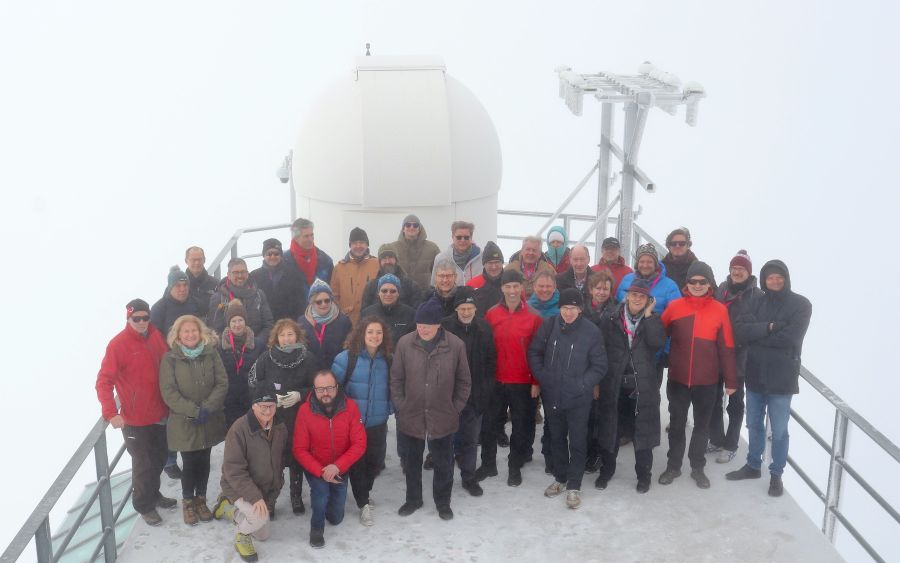
While touring through the laboratories and residences where Nobel Prize recipients, high-profile researchers, and esteemed members of international organisations were working and visiting before us, the cloud cover dissipated. Hence, the truly extraordinary landscape was finally revealed. While the HLA was given for the international scientific cooperation this location hosted between the University of Liège, Belgium and HFSJG, it is safe to say that the scenic panorama itself would deserve an award as well.
